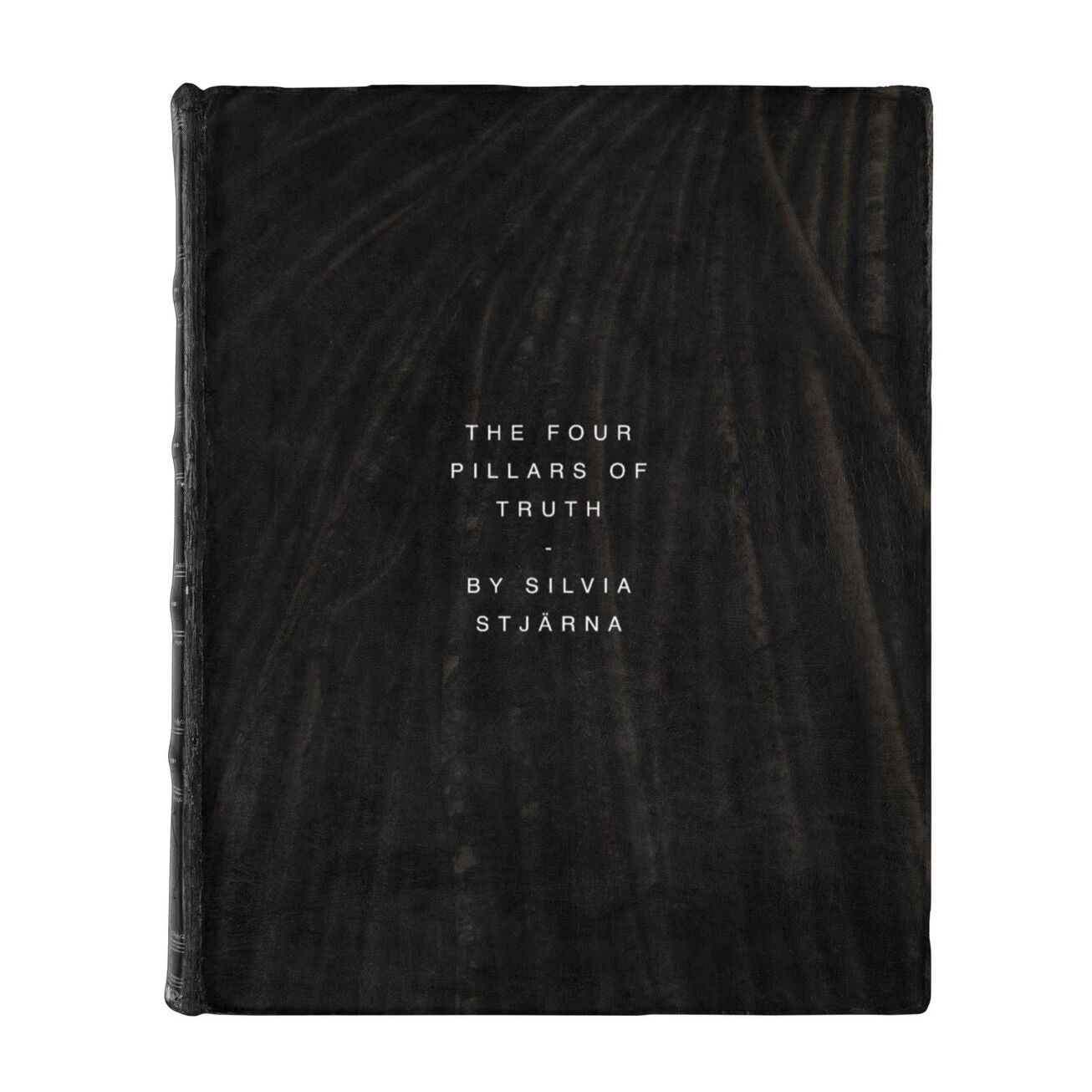Summary of The Four Pillars of Truth by Silvia Stjarna
Core Concept & Purpose
Silvia Stjarna presents The Four Pillars of Truth as a simple, hour-learnable system for structured cartomancy, tarot, and even propless readings. Framed as “recipes,” it requires no prior cartomancy experience (basic tarot knowledge aids tarot use) and can be adapted to diverse forms like palmistry, scrying, or tea leaf reading. The goal is to deliver meaningful, personalized readings through intuitive interpretation and conversational engagement.
Tools & Setup
- Decks:
- Cartomancy: A standard playing card deck (preferably non-traditional, e.g., Highlanders 1864 reproduction) or tarot (22 major arcana + 4 aces of minor arcana). Tarot suits align with playing cards: Hearts=Cups, Spades=Swords, Diamonds=Pentacles/Coins, Clubs=Wands/Batons.
- Four Aces Foundation: Place Aces of Spades, Hearts, Clubs, Diamonds face up horizontally. These represent “what cuts you” (Spades), “what heals you” (Hearts), “what guides you” (Clubs), and “what aids you” (Diamonds)—the “four pillars” structuring the reading.
Interpretation: The Devil’s Picture-book Rhyme
A rhyming guide links suits and card values to meanings, eliminating the need for memorization:
- Suits:
- Hearts (Blood): “To cherish loved ones” (love, emotions, relationships, creativity).
- Spades (Knife): “To joys divide” (obstacles, conflict, decisions, physical action).
- Diamonds (Stone): “To keep all treasures” (wealth, abundance, finances, giving/receiving).
- Clubs (Crook): “To firmly guide” (guidance, passion, ideas, non-physical action, energy).
- Values (Ace to King): Ace= new beginnings; Two= relationships; Three= growth; Four= stability; Five= sudden change; Six= harvest/gathering; Seven= mystery/superstition; Eight= movement/advancement; Nine= abundance; Ten= completion; Jack= learning; Queen= wisdom; King= power.
Reading Process
- Sitter Participation: Before revealing cards, ask the sitter to share their concerns (e.g., “What cuts you right now?”). This personalizes interpretations and builds rapport.
- Card Selection: The sitter shuffles the remaining deck, then selects one card per Ace (placing it face down on the corresponding Ace).
- Interpretation: Turn cards one by one, using the rhyme to link suit/value meanings to the sitter’s shared concerns. Expand by adding past/present/future: For a card (e.g., 4 of Diamonds), interpret the prior value (3 of Diamonds) as past, the card itself as present, and the next (5 of Diamonds) as future (values cycle: King → Ace).
Adaptations
- Tarot: Use major arcana + 4 aces. Interpret Knaves (tarot’s extra court cards) as a blend of Jack (learning) and Queen (wisdom). For the final reading, combine all four cards into a “bigger picture” by merging their imagery.
- Propless Readings:
- Mental Imagery: Imagine cards to disguise readings as intuition, palmistry, or scrying.
- Subconscious Readings (Lewis Le Val’s method): Sitter uses non-dominant hand to scribble “automatic writing” on business cards (mentally asking “What cuts me?” etc.). The reader interprets scribbles via imagined cards, framing messages as subconscious insights.
Key Tips
- Conversational Focus: Readings are dialogues, not performances. Prioritize the sitter’s input over “accuracy”—missed “hits” feel natural in conversation.
- Personalization: Asking the sitter to share concerns first lets you tailor card interpretations to their life (e.g., referencing their partner if they mention relationship issues).
- Simplicity: The system’s strength lies in its structure; no memorization is required—familiarity with the rhyme and active listening suffice.
In essence, The Four Pillars of Truth empowers readers to deliver meaningful, adaptable readings using simple tools, intuition, and engagement, whether with cards, tarot, or no props at all.

Comments0